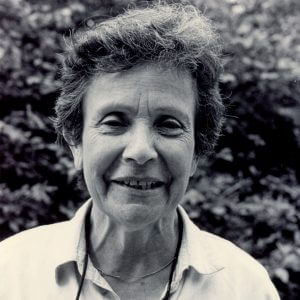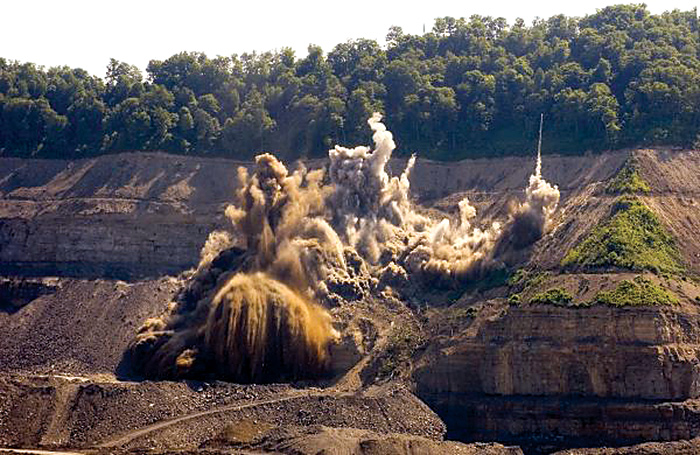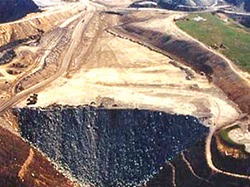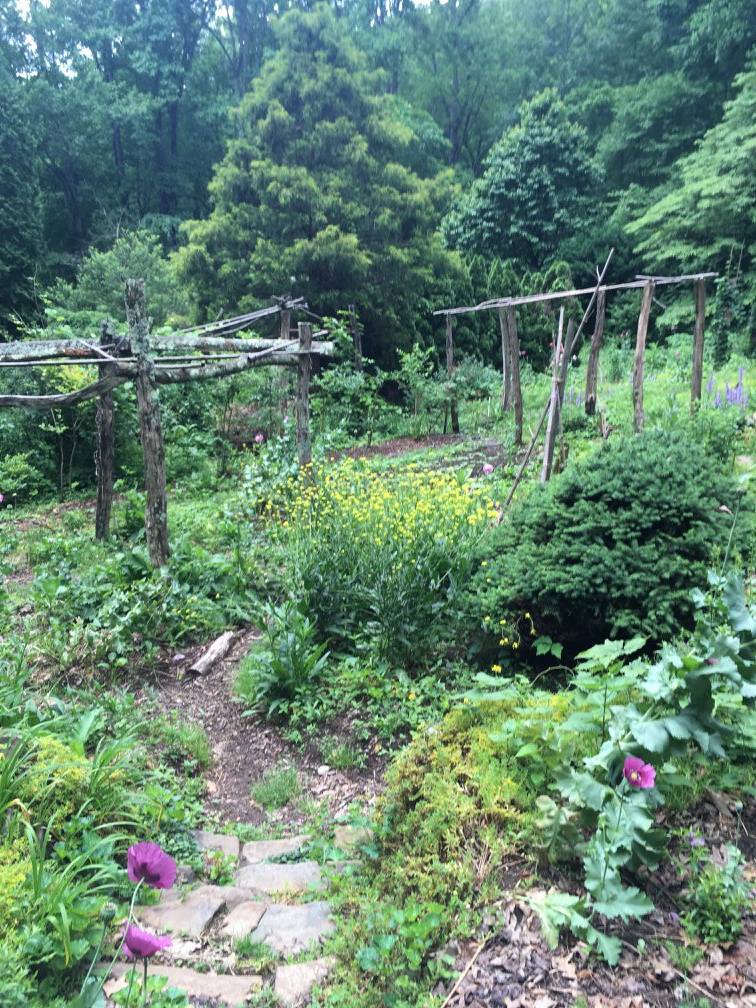
The Woodland Community Land Trust was incorporated in 1979, making it one of the oldest Community Land Trusts (CLTs) established in the United States. Located in the Clearfork Valley of northeastern Tennessee, a low-income Appalachian community dominated by extractive industry and concentrated land holding, economic, and political power, Woodland recently marked its 40th year in operation. Today, Woodland’s vision of community ownership still resounds in possibilities for Appalachian people and confronts the realities of peasant land dispossession throughout U.S. history and worldwide.
Woodland and its sister organizations, Woodland Community Development Corporation and Clearfork Community Institute, have acquired 450 acres for housing, small business development, education, gardening, and permaculture projects. Together, they are working towards accumulating the land and skills necessary to reverse the effects of landlessness and the loss, extraction, and exploitation of community equity and wealth. The CLT provides lifetime renewable and inheritable land leases, with home ownership for residents and opportunities for gardening. Forests are incorporated, enabling wildlife restoration, hunting and gathering, and opportunities for residents to self-provision.
A story of Woodland Community Land Trust would be incomplete without Marie Cirillo, an 89 year-old community member and one of its co-founders. She worked alongside other beloved community members, including Carol Judy, a legendary root digger and caretaker of native medicinal plants, organizer, and Woodland resident, to envision and develop the organization from its earliest stages.

“Sometimes roots help, and sometimes it’s just the belief that helps. The belief that home can be medicine, that the earth has healing for us.”
– Carol Judy
Over time, Woodland CLT has helped restore land holding, livelihoods, and economic self-sufficiency in the area. In a place perhaps best-known for mountaintop removal mining, where the majority of land is owned by absentee extractive companies and communities largely migrate to urban areas for work, many in the local community have embraced the CLT as a tool of collective organizing to rebuild their landscapes and relationships in a life-affirming way.

“Our Woodland Community Land Trust fulfills the needs of the landless poor.”
– Marie Cirillo
“In the decades after [Appalachians] arrived in the mountains… when they weren’t moving westward anymore, they no longer advanced the American Empire. They continued to grow maize in narrow hollows and graze their cattle in forest openings. But for some reason their persistence became a problem. They entered a period of conflict and decline that is the shadow of another story we’ve been told, about the Industrial Revolution. The central event [was] . . the rapid onslaught of joint-stock companies to attain the rights and ownership needed to clear-cut the forests and dig out the coal. . . historical progress required taking land away from agrarians and giving it to others.”
– Steven Stoll, Ramp Hollow: The Ordeal of Appalachia, xiv
What was lost is the raison d’être of Woodland Community Land Trust.
It must also be said that many other groups lost their lands and livelihoods or were prevented from access at all—indigenous people, African Americans, and Mexicans who suffered discrimination and displacement after the Mexican-American War and who were evicted after the U.S. took over California.
A significant number of white Appalachians originally arrived in this land as part of a wave of immigrants previously displaced from regions such as Ireland that had been encroached upon or outright conquered by English settlers in the generations before. Nonetheless, they by and large came to this land as voluntary immigrants. Not accepted by the Atlantic elite, they eventually settled in the mountains and developed a unique culture rooted in the rich and biodiverse landscape that had come to be known as Appalachia.
The Clearfork Valley
The Clearfork Valley is comprised of 12 unincorporated communities between Jellico, TN, and Middlesboro, KY. Unincorporated communities aren’t represented by local government and don’t have a tax base, often bringing financial and governance challenges. In the Clearfork Valley, lacking a unit of government also meant lacking representation to support local interests in the face of coal and resource companies. Between 1900 and 1950, the Clearfork Valley lost almost 90% of its residents, largely due to unemployment from the mechanization of industry. During this time, many coal companies converted to mountaintop removal mining, causing people to lose their jobs and oftentimes they moved north to urban areas for work. Meanwhile, 90% of the land in the Clearfork was bought up by corporations for extractive industry like mining.
“Often the people are wasted along with the resources taken from a place-based community such as ours . . . Appalachia is clearly a place where the area and the people have been sacrificed for the sake of energy.”
– Marie Cirillo
CAROLINE E. KNIGHT, SARAH POTEETE, AMY SPARROW, JESSICA C. WRYE and Marie Cirillo Appalachian Journal Vol. 30, No. 1 (FALL 2002), pp. 30-56 “From the Ground Up: The Community Building of Marie Cirillo”
This extreme level of absentee and corporate ownership is a theme throughout much of central Appalachia. It presents a structural challenge for residents whose lives and communities are sacrificed for tremendous and growing energy demands nationally and internationally. Coal was the basis for industrialization in northeast and mid-western cities in the U.S. Appalachia provided the energy, and the region was written off as a “national sacrifice zone” for wealthy cities’ business and industry needs. Mountaintop removal mining, or strip mining, the modern method to mine coal, has alone destroyed more than 500 mountains and 2,000 miles of headwater streams. The Appalachian region now faces the destructive power of hydraulic fracking, chemical spills, pipelines, and a potential petrochemical hub.


“There is a phrase for the Appalachian coal fields – National Sacrifice Area… I hate that phrase because it slides over so much, and yet it keeps coming back to me as the truth… that we have agreed to sacrifice this land and these people… It’s a little short of human genocide, except indirectly, but it is based on a decision made, and connived in, by . . . leaders that the people of the mountains, pretty much along with rural people everywhere, are dispensable, and this has resulted not only in the destruction of a lot of places but also in the virtual annihilation of rural cultures, which were at least, in potential, and sometimes very close in actuality, to authentic cultures of husbandry.”
– Wendell Berry
Source: The Appalachian Voice
A Bit of History
Before coal, many of central Appalachia’s settlers depended on large forested mountains as a “commons” base for food. This region was the edge of European colonialism, and a place where property rights were largely unenforced, despite wealthy, absentee elites gaining title to millions of acres through grants and purchase. Barter and gift economies thrived. (For more on this history, see The Dispossessions of Appalachia: A Review of Ramp Hollow by Barbara Ellen Smith in Southern Spaces.)

Various phases of dispossession in Appalachia can be traced to land-grabbing by absentee extractive industry, but also taxation, the latter requiring legal currency that the barter system did not employ. Taxation forced a cash economy on subsistence agrarians in the remote Appalachians.
The Atlantic elite who dispossessed and appropriated the means of these agrarians then made them into “the horrifying hillbillies that lowlanders had always assumed them to be.” (Stoll, 175). Of course, many of the subsistence Appalachian mountain farmers were not poor by their own standards. However, a campaign of “development” (e.g. War on Poverty) looked down on their lives and farming methods as inefficient and unproductive, in contrast to the capitalist mindset of high efficiency and productivity at all costs.
Rapacious capitalism reliant on timbering and exploitative mining would eventually destroy the ecological base and subsistence agrarian economy in central Appalachia. This created a region that is home to some of the greatest natural resources, as well as diversity of plant and animal life in North America, and yet some of the starkest financial poverty.
People think that we have been isolated from the world. I believe it is the opposite, that the world has been isolated from us.
– Carol Judy
One could list hundreds of environmental, health, and economic woes in the region, but it is also a place of remarkable creativity, resistance, and divine beauty. As Carol Judy says, “if you look hard enough, you’ll find an essence of Appalachia culture in any resilient community.” Central Appalachia resonates with places worldwide where enclosures, loss of the commons, and land grabs are rapidly encroaching on agrarian ways of life and the viability of traditional agricultural practices.https://wvminewars.org/
“Every problem Appalachia has—mine safety, black lung, strip-mining, pollution, the decline of farming, floods, substandard housing, welfare, every single problem—can ultimately be traced back to the question of who owns the land.”
– Mike Clark, Highlander Center, 1982
Seeds of the CLT
In 1977, a flood disaster struck the Clearfork Valley. Floods were common in strip-mined areas when negligent practices combined with heavy rains. For example, the Buffalo Creek Flood, in which 132 million gallons of wastewater left 125 dead and 4,000 homeless, had a faulty coal slurry impoundment dam to blame. The 1977 flood was no exception. It had been exacerbated by the strip-mining for coal. Emergency housing trailers that the U.S. Department of Housing and Urban Development brought sat unoccupied because land was too flood-prone for them.
Cirillo recounts: “[T]he floods in 1977 were really a wakeup call for local residents about how much we had lost control of our own living environment.” That year, the group that would later become Woodland CLT was formed.
Since 1975, Cirillo and allies had spent a few years developing and floating the concept of community-owned land in the Clearfork as an antidote to corporate ownership. Between 1967 and Woodland’s formation in 1977, community members had organized to get basic services, such as medical clinics, to the Clearfork Valley. However, residents often couldn’t find land to place the facilities on, and usually they were placed on land that wasn’t owned by the community. These critical needs paved the way for Woodland. Its organizers also knew they needed land for more than houses—the land needed to lay a foundation for basic services and jobs.
Becoming Woodland CLT
In 1975, Marie Cirillo, with neighbors and the support of community land trust movement’s Robert Swann and Susan Witt of the Schumacher Center, organized a group of Clearfork residents around the concept of a rural CLT as a formal organization. Meanwhile, the Regional Land Trust for Appalachian Communities had formed to spread the word about the value of CLTs, with the support of Swann, Witt, and Schumacher. The group of residents found 40 acres for sale, and without any money to purchase it, approached the Regional Land Trust, which raised the funds and secured a lawyer to purchase the land for $20,000.
The nascent CLT could not purchase the land outright, so it entered into an agreement with the Regional Land Trust. The Trust allowed people to live on the land while it collected land leases as part of a payment plan. By 1982, the CLT had paid back its debt and changed its name to Woodland Community Land Trust. Its founding principles included strengthening the identity and connection that mountain people have with the land, acquiring land for public and private needs, and rebuilding the community. Cirillo also deeded her own land over to the CLT.
At the time, only a few CLTs had been established in the U.S., adding to the challenge of finding resources and mentors for support and guidance. Woodland soon adopted a model of owning land as a “commons” for gardening, forestry, small business development, education, and affordable housing. Homes and related improvements were owned by individuals. Woodland residents also each held a lifetime lease on an acre of land for gardening or a “homestead acre.” The model continues today.

As Woodland developed, members often turned to Bob Swann and Susan Witt for their advice. Today, there are several similar land-based community land trusts including:
- Cold Pond Community Land Trust (NH)
- Monadnock Community Land Trust (NH)
- Trust Montana (MT)
- Dudley Neighbors (MA)
- Community Land Trust in the Southern Berkshires (MA)
- Evergreen Community Land Trust (WA)
- Lopez Community Land Trust (WA)
- Madison Area Community Land Trust (WI)
- Ozark Regional Land Trust (MO)
- School of Living (PA, MD, VA)
According to Swann:
“A CLT is a form of common land ownership with a charter based on the principles of sustainable and ecologically sound stewardship and use. The central principle of the community land trust is that homes, barns, fences, gardens, and all things done with or on the land should be owned by the individuals creating them, but the land itself—a limited community resource—should be owned by the community as a whole. A CLT takes land off the speculative market and places it in a regional, membership-based, nonprofit corporation.”
Source: Community Land Trusts: Saving the Land to Which We Belong by David Harper
In 1997, Woodland CLT purchased 167 acres of strip-mined, deep-mined, and clear-cut land called “Eagan Mountain,” in order to restore it. To purchase the property, Woodland established a $50,000 line of credit with a local bank. Eight friends of the CLT enabled this by buying certificates of deposit held by the bank as collateral. Within three years, Woodland had fundraised enough to cover its debt to the bank and the friends were repaid. Cirillo reflects: “There is no way for this area to revive itself as a rural community dependent on natural resources if we don’t commit time to healing our place on Earth.” At this time, Equity Trust also made loans to the CLT for additional land for housing, agriculture, and aquaculture.
Unfortunately, Woodland’s development was not without struggle. Threats and arson have harmed community members and Woodland’s assets and set back work.
“I have certainly lived with harassment and threats and burning as have many others. In the past year and a half our CLT has lost seven of its seventeen buildings to arson. Our development efforts are not supported or viewed with favor by those with money and power. . . . If we try to challenge these powerful institutions, we don’t fare very well and are not treated very well. Those of you familiar with the history of Appalachia know that the [U.S.] army has been called in to stop union strikes.”
– Marie Cirillo
CAROLINE E. KNIGHT, SARAH POTEETE, AMY SPARROW, JESSICA C. WRYE and Marie Cirillo Appalachian Journal Vol. 30, No. 1 (FALL 2002), pp. 30-56 “From the Ground Up: The Community Building of Marie Cirillo”
In 1997, Woodland CLT acquired 12 acres and an old school in Eagan from a coal company. Of course, the coal company wouldn’t sell or deed it to Woodland directly, as they saw the CLT as “in competition.” However, Woodland was able to acquire the property when it was donated to another nonprofit, Model Valley Development Council. The members spent a long time envisioning what the land and building could become, and ultimately landed on a learning center to promote sustainable economies, community-based education, and local culture and values to support families and community—the Clearfork Community Institute.
Other facets of the Clearfork Community Institute’s purpose are enabling a strong foundation to ensure that what people learn gives them a role in policymaking, that sustainability is upheld as local people are trained in ways to generate income, and that locals are involved in deciding how their restored lands are used, whether for homesteads, commerce, industry, agriculture, or forest. As a rural center in an urbanized society, the Institute aims to share how urbanites and rural people are part of one experience, varied and diverse as it is, and how there is a shared need to remake land tenure and ownership policies.
“In terms of vision, I think a country that doesn’t sustain a healthy rural society is going to suffer greatly. This movement of people, trying to put lands into conservation trusts, to keep them pure so they’ll have something to go to and enjoy—that’s really missing the point of how to take care of land that has to sustain you. . . Someday I’m hoping that city folks will want to do more than travel through the forest, that they might want to come and live there for a while. That’s what I’ve been dreaming of with this new center at Eagan [Clearfork Community Institute]. Part of their learning would be working to restore the land so that we can develop an economy that doesn’t take everything out of the land but takes something from us that we’ve learned. But getting that going will be in someone else’s lifetime.”
– Marie Cirillo
CAROLINE E. KNIGHT, SARAH POTEETE, AMY SPARROW, JESSICA C. WRYE and Marie Cirillo Appalachian Journal Vol. 30, No. 1 (FALL 2002), pp. 30-56 “From the Ground Up: The Community Building of Marie Cirillo”
Woodland Today
Over the past 40 years, Woodland acquired 450 acres, creating 21 affordable homes, each on one acre governed by a 99-year renewable, equitable lease to its residents. There is commons land for gardens, play, and community use; community facilities; and a protected 400-acre forest. Woodland and its sister organizations also built four additional native material homes in the larger community.
“ . . .[C]ollective access to land is key to the future of Appalachia.”
– Barbara Ellen Smith, Professor Emerita, Virginia Tech
Source: The Dispossessions of Appalachia: A Review of Ramp Hollow by Barbara Ellen Smith in Southern Spaces
Many groups and projects came into being as a result of Woodland, its land assets, and its organizing efforts. For example, Woodland Community Development Corporation, Mountain Women’s Exchange, Appalachian-Based Community Development Education, medical clinics, and Save Our Cumberland Mountains all stemmed from Woodland CLT and its organizers. Cirillo shares: “[o]nce we acquired land, once we had a plan for its use and once people settled on it who had a consistent ethic about land being held in trust, we began to care for it, to share it, and to distinguish between public and private land. This is what led to new developments.”

Woodland’s broad community benefits stem from its goals to:
- Acquire property within the community
- Exercise stewardship rights over the land by preserving, protecting, and enhancing natural, scenic, recreational, and productive attributes
- Lease land to disadvantaged local people, giving them the use rights over the land and profits gained from that use
- Assist residents and groups in developing entrepreneurial and management skills necessary for the successful operation of business enterprises
- Assist residents and groups in obtaining financial support from other sources
- Help relieve the poor, distressed, underprivileged, and indigent by enabling them to secure the basic human needs of decent shelter
In 2013, at 84 years of age, Marie Cirillo stepped down as Director of Clearfork Community Institute, having shifted from Woodland CLT management in 2003. She is still involved with the CLT and CCI and continues to reside in the Clearfork Valley. She shares some of her reflections on her decades of of providing services and fostering hope in community in the Clearfork:
“It hasn’t all been fun, nor has it all been struggle. But it certainly has been a challenge to try to slow down the runaway system of out-migration, the loss of roots, the alienation of Americans from the land as prime resource, and the dwindling of skills that sustain a rural society. What keeps my feet to the fire are the wisdom and values of mountain people. Home is much more for them than the walls that provide shelter for the family. Home is the physical, geographic place in a natural setting where they and their friends become part of the larger living community. It is a microcosm of Earth. The place-based community is extremely important to us, and together we do what we can to resist the way in which society tends to disconnect us from it. Unfortunately, industrial development has worked against many aspects of a rural community, and much wisdom has been lost in the process. . . . I am fighting on behalf of all of Appalachia in my work in the Clearfork Valley. What place is going to be sacrificed next for the needs of the industrialized world for which America serves as the model?”
For the past 15 years, Tonia Brookman has served in the leadership of Woodland CLT. She has been with Woodland for almost 25 years, and we are grateful for the reflections that she shared with us in drafting this case study. Brookman currently supports 18 families who live on the CLT property. Many of the residents are in their 70s and 80s. Much of the work of Woodland today is helping elders, including those outside the CLT community, with groceries, doctor’s appointments, and other needed services.
Since Woodland has existed for over 40 years, Brookman has gained deep insight into the life, beauty, and challenges of a rural CLT in our times:
“At first, Woodland CLT residents were all young families who were very involved with the organization and the land. We couldn’t foresee who would be here in 99 years, or what would happen when people became older and sick and they didn’t have family to assist them. Now, a lot of young families are too busy handling crises, such as loss of a job, feeding their children, commuting hours to new work since a mine shut down, the opioid epidemic. Many in the younger generation did not grow up with a sense of community. How can they take on involvement with the CLT and be motivated to steward 450 acres at Woodland? Often, banks aren’t even willing to give potential residents financing [for those who wish to own a home at Woodland] due to lack of income and credit. How do you help people overcome these challenges? It is a struggle and I see it every day.”
Many of the homes have become rental homes because it is difficult to secure a mortgage given household incomes. While it is still Woodland’s goal for residents to be home owners and build equity, capitalist forces far beyond Woodland’s control are in the way. Today, the opioid epidemic is also wreaking havoc on the region and ability of the place and people to thrive–a contemporary branch from the same root that led to extraction and financial poverty. Both consciousness-numbing prescription drugs and extractive economic forces ultimately cause the collective loss of connection to the commons.
“It’s a food stamps, welfare, crippling economy, because it lets you kind of sustain or meet some basics, but not even really that, so you are always trying . . . your energy’s burnt up trying to manage, and maintain, and scrap, and make do. And sometimes what we’re trying to maintain we realize is a myth. But we know that we don’t have any problems that are any worse than anybody else, so commonality of our issues can lead us to work together toward better solutions.”
– Carol Judy
Source: Video, Carol Judy on Rural Work; Humans of Central Appalachia.
Lessons from Woodland Inform Our Work at Agrarian Trust
Agrarian Trust is dedicated to stewarding land as a common asset to provide secure tenure and direct connections to the landscape and agrarian livelihoods. To do this, we remove land from the commodity market and place it in the hands of communities closest to it. This land is held in a local “Agrarian Commons” or by 501(c)(2) organizations modeled after inspiring land-based community land trusts such as Woodland CLT. Through local control of an Agrarian Commons, affordable access to land, housing, equipment, and infrastructure, as well as the health of land, communities, and humans is best ensured.
An Agrarian Commons also supports land access and tenure for the next generation of farmers through long-term or lifetime, renewable leases to farmers. Farmers build equity by owning farm infrastructure and housing, and by actively stewarding the soils, ecosystem, and community. Learning from Woodland and related models in communities that have been prey to extraction, our goal is to be responsive to the realities of wealth disparity, farm viability, and exclusion of people marginalized from access and equity in land, food, health, and economic opportunity.
Specifically, models like Woodland CLT that holistically address land use inspire us to work through a community approach, considering the whole agrarian community, its needs, and all necessary and associated real estate and assets. Similarly, we will utilize community capital in multiple ways as does Woodland CLT. An Agrarian Commons is as much a structure for land ownership and tenure as it is for community-held equity, empowerment, and decision-making, just as Woodland CLT holds land, people, enterprise, and community as a part of the collective work.
We are committed to supporting transitions of land, knowledge, experience, people, farms, and stewardship, while prioritizing the legacy of elders. We uphold a future that preserves and values the past generation of farmers and land-based community culture.
Our structure will inherently involve the intersections of retirement and end-of-life discussions among of farmers and the needs of evolving and aging communities, as well as the beginning of life of the next generation farmers and their communities. We will endeavor to provide support and care for elders through both the financial and human capital retained and brought into in these communities.
In cases where elders like Marie Cirillo and Carol Judy are so instrumental to the formation and thriving of a CLT, how can we support similar transitions that uphold the legacy of past generations while nurturing the next? And in cases where elder care is necessary, especially so elders can age in-place with dignity, how can an Agrarian Commons be set up now to support this critical facet of land transition?
We hope these land-based commons can also provide footing for related and allied groups and projects to develop. When land is owned by community and long-term, affordable, and equitable tenure is in place for residents and farmers, communities can put more time and energy into ensuring community needs are met. The essence of the Agrarian Commons is not so much that it is a prescriptive model to follow, but that it is a structure that supports dynamic communities embedded in the relationality of place and people to enable political, economic, and social transformation.
Cited and Related Resources:
ASA Journal Article: https://www.jstor.org/stable/40934216?seq=1#page_scan_tab_contents
Equity Trust: http://equitytrust.org/2015/02/woodland-community-land-trust/
Marie Cirillo, from Schumacher: https://centerforneweconomics.org/people/marie-cirillo/
Marie Cirillo. 2000. Twentieth Annual E. F. Schumacher Lectures, Salisbury, Connecticut.: https://centerforneweconomics.org/publications/stories-from-an-appalachian-community/
John Gaventa. 1982. Power and Powerlessness: Quiescence and Rebellion in an Appalachian Valley. Urbana, University of Illinois Press. (Cirillo served as mentor to John Gaventa)
Caroline E. Knight, Sarah Poteete, Amy Sparrow, and Jessica C. Wrye. 2002. “From the Ground Up: The Community-Building of Marie Cirillo.” Appalachian Journal, Vol. 30, No. 1: 30-56.
Helen M. Lewis and Monica K. Appleby. 2003. Mountain Sisters: From Convent to Community in Appalachia. Lexington: University Press of Kentucky.
Steven Stoll, Ramp Hollow: The Ordeal of Appalachia
Catherine Venable Moore, The Book of the Dead https://www.oxfordamerican.org/item/1049-the-book-of-the-dead and O Beulah Land https://www.oxfordamerican.org/magazine/item/351-o-beulah-land
Holly Haworth, A Place to Root https://www.oxfordamerican.org/magazine/item/350-a-place-to-root?fbclid=IwAR3SAumsnKmszk7ENkbZPCiAmVVFCGyL-tnJZeVuCo9vQdr4fZTj4YPhCWc
The Dispossessions of Appalachia: A Review of Ramp Hollow Barbara Ellen Smith: https://southernspaces.org/2018/dispossessions-appalachia-review-ramp-hollow
Appalachia Puts Environmental Human Rights to the Test https://www.yesmagazine.org/planet/appalachia-puts-environmental-human-rights-to-the-test-20180117
Owning the Mountains: Appalachia’s History of Corporate Control http://appvoices.org/2016/02/18/corporate-land-ownership-appalachia/
Commons Communities Act, Steven Stoll



